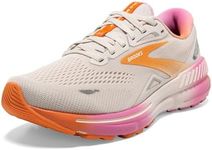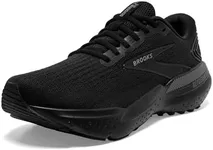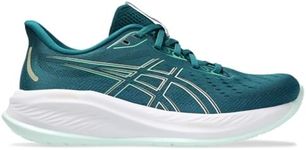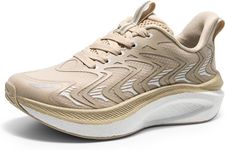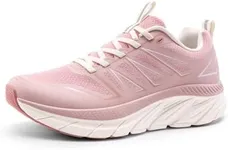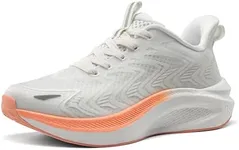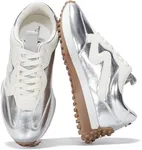Buying Guide for the Best Shoes For Overpronation Women
When choosing shoes for overpronation, it's important to find a pair that provides the right support and stability to help correct your gait and prevent injuries. Overpronation occurs when your foot rolls inward excessively while walking or running, which can lead to discomfort and other issues. The right shoes can help manage this condition by offering the necessary support and cushioning. Here are some key specifications to consider when selecting shoes for overpronation.Arch SupportArch support is crucial for individuals with overpronation because it helps to maintain the natural alignment of the foot. Shoes with good arch support will have a firm midsole that prevents the foot from rolling inward excessively. When choosing shoes, look for those labeled as having 'stability' or 'motion control' features, as these are designed to provide the necessary support for overpronation. If you have low arches or flat feet, you may need more pronounced arch support, whereas those with moderate arches might require less.
CushioningCushioning in shoes helps to absorb the impact of each step, reducing stress on the feet and joints. For overpronators, cushioning is important because it can help to mitigate the effects of the inward roll. Shoes with adequate cushioning will have a thicker, softer midsole, often made from materials like EVA foam or gel. If you engage in high-impact activities like running, you may need more cushioning to protect your feet, while for everyday walking, moderate cushioning might suffice.
Heel CounterThe heel counter is the part of the shoe that wraps around the back of the heel. A firm heel counter is essential for overpronators as it provides stability and helps to keep the heel in place, preventing excessive inward rolling. When selecting shoes, press on the heel counter to ensure it is firm and does not collapse easily. A strong heel counter will offer better control and support, which is particularly important for those with severe overpronation.
Sole DesignThe design of the sole can influence the stability and support of the shoe. For overpronation, look for shoes with a wider base and a straight or semi-curved last (the shape of the shoe). These features help to provide a stable platform and reduce the tendency of the foot to roll inward. Additionally, the sole should have good traction to prevent slipping and ensure a secure grip on various surfaces. If you often walk or run on uneven terrain, a more rugged sole design might be beneficial.
Fit and ComfortA proper fit is essential for any shoe, but especially for those designed to correct overpronation. Shoes that are too tight or too loose can exacerbate the problem and lead to discomfort or injury. When trying on shoes, make sure there is enough room in the toe box for your toes to move freely, and that the shoe fits snugly around the midfoot and heel. Walk or run in the shoes to ensure they feel comfortable and provide the necessary support. Remember that different brands and models may fit differently, so it's important to try on several options to find the best fit for your feet.
